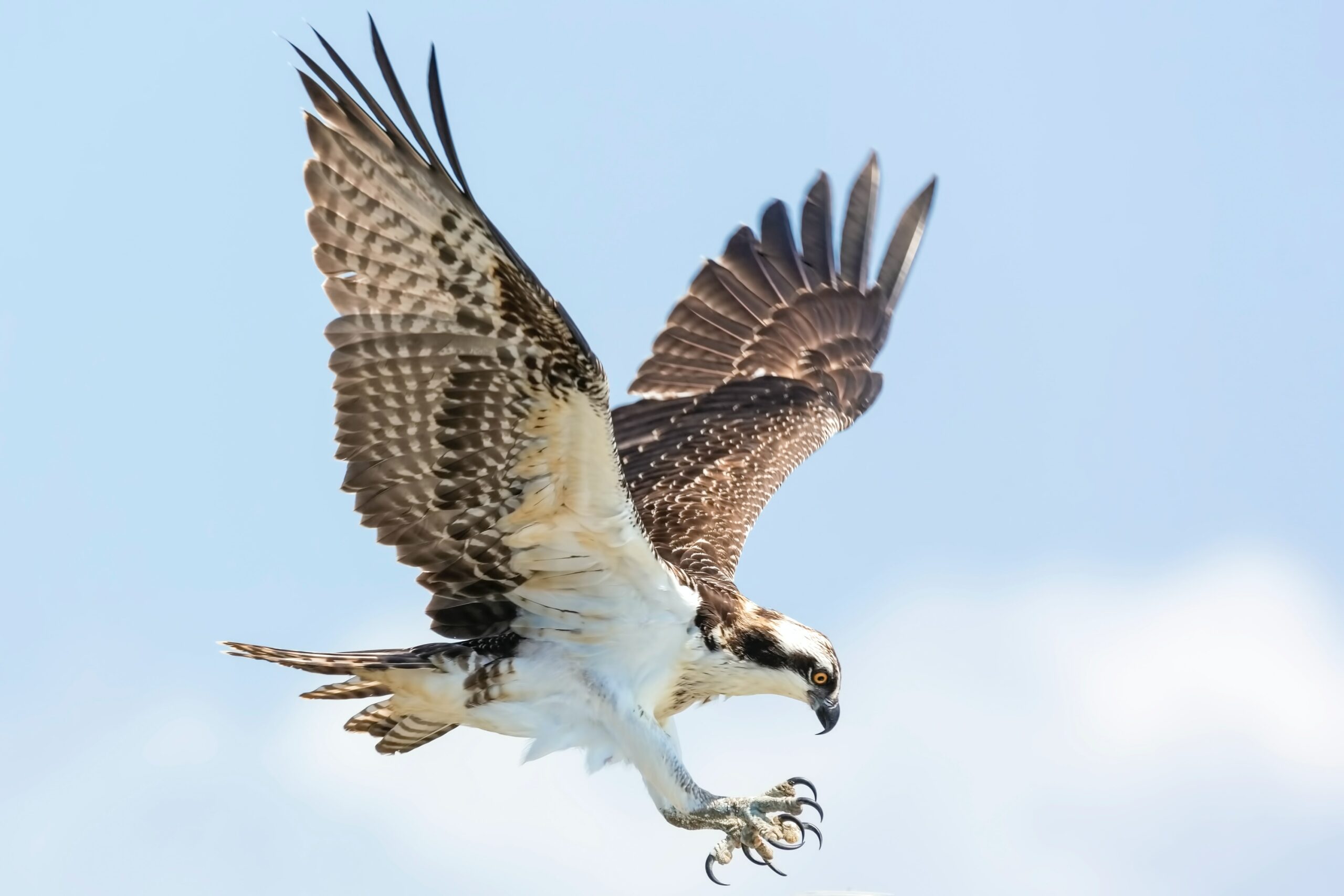Welcome to the aerial predators of the skies known as hawks. These majestic birds of prey dominate the skies with their keen eyesight, swift flight, and remarkable hunting skills. Hawks belong to the animal kingdom’s order Accipitriformes and the family Accipitridae, which also includes eagles and kites.
Soar to great heights while taking a moment to explore the diverse realm of hawks, including their various species, popular types, size variations, hunting techniques, reproductive behavior, lifespan, unique characteristics, and the distinctions between hawks, eagles, and falcons
Hawks are medium to large-sized birds of prey known for their sharp beaks, powerful talons, and exceptional vision. They possess broad wings for agile flight and strong, muscular legs adapted for capturing and subduing prey.
Hawks exhibit a range of colors and patterns in their plumage, often displaying sexual dimorphism, where males and females may differ in appearance. With their extraordinary aerial abilities, hawks are highly efficient hunters and occupy diverse habitats worldwide.
Types of Hawks:
There are over 270 species of hawks distributed across various habitats around the world. Some popular types include the Red-tailed Hawk, Cooper’s Hawk, and several others. Here is an aerial view of some of the more popular species:
Red-tailed Hawk: The Red-tailed Hawk is one of the most widespread and recognizable hawk species in North America. It features a distinctive brick-red tail and displays considerable size variations across its range. These hawks primarily feed on small mammals, birds, reptiles, and occasionally carrion.
Cooper’s Hawk: Cooper’s Hawks are agile forest-dwelling hunters known for their quick flight and maneuverability. They have rounded wings and long tails, allowing them to navigate through dense vegetation in pursuit of small birds and mammals.
Northern Goshawk: The Northern Goshawk is a formidable and powerful hawk found in northern forests. It is known for its large size, robust build, and fierce hunting abilities. Goshawks primarily prey on birds, including grouse and pigeons, and occasionally target small mammals.
Harris’s Hawk: Harris’s Hawks are unique among raptors as they exhibit a cooperative hunting behavior known as “pack hunting.” They are social birds often found in family groups. Harris’s Hawks have a varied diet that includes small mammals, birds, lizards, and insects.
Sharp-shinned Hawk: The Sharp-shinned Hawk is a small but agile hawk found in North and Central America. It is known for its quick and acrobatic flight, allowing it to pursue and capture small birds in dense woodland habitats.
Ferruginous Hawk: The Ferruginous Hawk is a large and powerful species primarily found in open grasslands and deserts. It is named for its rust-colored plumage and exhibits a unique feeding behavior, often preying on ground squirrels and prairie dogs.
Rough-legged Hawk: Rough-legged Hawks are adapted to cold climates and can be found in northern regions of North America, Europe, and Asia. These hawks have feathered legs, providing insulation in frigid environments. They primarily feed on small mammals, especially rodents.
Swainson’s Hawk: Swainson’s Hawks are known for their impressive long-distance migrations, covering thousands of miles each year between North and South America. They feed on a variety of prey, including small mammals, birds, reptiles, and insects.
Broad-winged Hawk: Broad-winged Hawks are forest-dwelling raptors that migrate in large groups known as “kettles.” They have broad wings and rely on thermal updrafts for soaring during migration. Broad-winged Hawks feed on small mammals, birds, and insects.
Red-shouldered Hawk: The Red-shouldered Hawk is a medium-sized hawk found in forested habitats of North America. It is recognized by its reddish-brown shoulders and distinct vocalizations. Red-shouldered Hawks primarily prey on small mammals, amphibians, reptiles, and insects.
Unique Characteristics of Hawks:
Hawks possess several unique characteristics that make them exceptional predators. Their sharp, curved beaks are adapted for tearing and consuming prey. Hawks have strong talons equipped with sharp claws for grasping and immobilizing their prey.
Their exceptional vision allows them to spot even small movements from great distances, aiding them in locating prey and navigating their surroundings.
Summary
Hawks, with their aerial prowess, sharp senses, and powerful hunting abilities, are remarkable predators that grace the skies with their presence. From the iconic Red-tailed Hawk to the agileSharp-shinned Hawk, each species of hawk showcases unique characteristics and adaptations that enable them to thrive in their respective habitats.
These birds of prey play crucial roles in maintaining ecosystem balance by controlling populations of small mammals, birds, and reptiles. As we admire their beauty and grace, let us also strive to protect their habitats and ensure their continued presence in our natural world. With their remarkable hunting skills and captivating aerial displays, hawks will forever inspire awe and admiration in all who observe them in flight.



































































